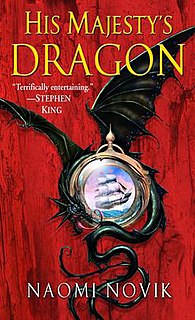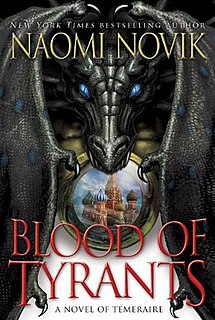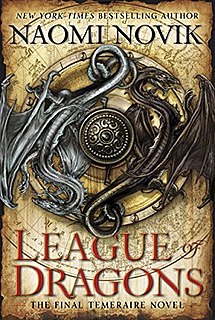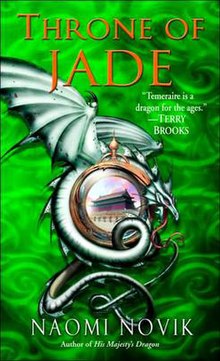
The Chinese dragon, also known as loong, long or lung, is a legendary creature in Chinese mythology, Chinese folklore, and Chinese culture at large. Chinese dragons have many animal-like forms such as turtles and fish, but are most commonly depicted as snake-like with four legs. Academicians have identified four reliable theories on the origin of the Chinese dragon: snakes, Chinese alligators, thunder and nature worship. They traditionally symbolize potent and auspicious powers, particularly control over water, rainfall, typhoons, and floods. The dragon is also a symbol of power, strength, and good luck for people who are worthy of it in East Asian culture. During the days of Imperial China, the Emperor of China usually used the dragon as a symbol of his imperial strength and power. In Chinese culture, excellent and outstanding people are compared to a dragon, while incapable people with no achievements are compared to other, disesteemed creatures, such as a worm. A number of Chinese proverbs and idioms feature references to a dragon, such as "Hoping one's child will become a dragon".

The Monkey King, also known as Sun Wukong in Mandarin Chinese, is a legendary mythical figure best known as one of the main characters in the 16th-century Chinese novel Journey to the West and many later stories and adaptations. In Journey to the West, Sun Wukong is a monkey born from a stone who acquires supernatural powers through Taoist practices. After rebelling against heaven, he is imprisoned under a mountain by the Buddha. After five hundred years, he accompanies the monk Tang Sanzang (唐三藏) and two other disciples on a journey to get back Buddhist sutras from the West (subcontinent), where Buddha and his followers dwell.

The Jiaqing Emperor, whose personal name is Yongyan, was the sixth emperor of the Manchu-led Qing dynasty, and the fifth Qing emperor to rule over China proper, from 1796 to 1820. He was the 15th son of the Qianlong Emperor. During his reign, he prosecuted Heshen, the corrupt favorite of his father, and attempted to restore order within the Qing Empire while curbing the smuggling of opium into China.

The Jade Emperor or Yudi in Chinese culture, traditional religions and myth is one of the representations of the first god. In Daoist theology he is the assistant of Yuanshi Tianzun, who is one of the Three Pure Ones, the three primordial emanations of the Tao. He is often identified with Śakra in Chinese Buddhist cosmology.

Admiral Charles Middleton, 1st Baron Barham, PC was a Royal Navy officer and politician. As a junior officer he saw action during the Seven Years' War. Middleton was given command of a guardship at the Nore, a Royal Navy anchorage in the Thames Estuary, at the start of the American War of Independence, and was subsequently appointed Comptroller of the Navy. He went on to be First Naval Lord and then First Lord of the Admiralty. Middleton also played a crucial role in the abolition of the slave trade.

Pixiu is a Chinese mythical hybrid creature. Pixiu are considered powerful protectors of feng shui practitioners, and resemble strong, winged lions. A Pixiu is an earth and sea variation, particularly an influential and auspicious creature for wealth, and is said to have a voracious appetite exclusively for gold, silver, and jewels. Therefore, traditionally to the Chinese, Pixiu have always been regarded as auspicious creatures that possessed mystical powers capable of drawing cai qi from all directions, and according to the Chinese zodiac, it is especially helpful for those who are going through a bad year.
Temeraire or Téméraire may refer to:
Anke Katrin Eißmann is a German illustrator and graphic designer known for her illustrations of J. R. R. Tolkien's legendarium. She studied visual communication at Bauhaus University in Weimar and at the Colchester Institute in the United Kingdom. Eißmann has also made a number of short films. She is an art teacher at the Johanneum high school in Herborn.

Monkey Magic (モンキーマジック) is a Japanese television series that aired in the late 1990s. The story is an adaptation of the 16th-century novel Journey to the West. To avoid religious implications, the Buddha was named "The Guardian". Sunsoft produced a PlayStation video game based on the anime. It was aired in Japan in 2000 but later aired in the USA on UPN.

Naomi Novik is an American author of speculative fiction. She is known for the Temeraire series (2006–2016), an alternate history of the Napoleonic Wars involving dragons; her standalone fantasy novels Uprooted (2015) and Spinning Silver (2018), which were inspired by Polish folklore and the Rumpelstiltskin fairy tale, respectively; and her Scholomance fantasy series (2020–2022). Novik has won many awards for her work, including the Alex, Audie, British Fantasy, Locus, Mythopoeic and Nebula Awards.
Temeraire is a series of nine alternate history fantasy novels written by American author Naomi Novik. The novels follow the adventures of Captain William Laurence and his dragon, the eponymous Temeraire, and reimagine events of the Napoleonic Wars with "an air force of dragons, manned by crews of aviators". His Majesty's Dragon, the first entry in the series, won the Compton Crook Award in 2007 and was nominated for the Hugo Award for Best Novel the same year. Temeraire: In the Service of the King, an omnibus volume collecting the first three novels, won the Locus Award for Best First Novel in 2007. Temeraire was nominated for the Hugo Award for Best Series in 2017.

His Majesty's Dragon, published in the UK as Temeraire, is the first novel in the Temeraire alternate history/fantasy series by American author Naomi Novik. It was first published in 2006. It won the 2007 Compton Crook Award for best novel in the science fiction/fantasy genre during 2006 by a first-time author.

Black Powder War is the third novel in the Temeraire alternate history/fantasy series by American author Naomi Novik. The novel was first published by Del Rey in the United States on May 30, 2006, and by Voyager in the United Kingdom in August 2007.

The Dragon Throne was the throne of the Emperor of China. As the dragon was the emblem of divine imperial power, the throne of the Emperor was known as the Dragon Throne. The term can refer to very specific seating, as in the special seating in various structures in the Forbidden City of Beijing or in the palaces of the Old Summer Palace. Metonymically, "the Dragon Throne" can also refer to the Chinese sovereign and to the Chinese monarchy itself. The Daoguang Emperor is said to have referred to his throne as "the divine utensil."

Empire of Ivory is the fourth novel in the Temeraire alternate history/fantasy series by American author Naomi Novik. Set in Africa, the novel follows William Laurence and his dragon Temeraire's search for a cure to the disease that has paralyzed the dragon community. Novik visited southern Africa in search of places in the fourth novel.

Victory of Eagles is the fifth novel in the Temeraire alternate history/fantasy series by American author Naomi Novik. The series follows the actions of William Laurence and his dragon, Temeraire.

Tongues of Serpents is the sixth novel in the Temeraire alternate history/fantasy series by American author Naomi Novik. This installment follows William Laurence and his dragon, Temeraire's adventures in Australia.

Crucible of Gold is the seventh novel in the Temeraire alternate history/fantasy series by American author Naomi Novik. This installment features the adventures of William Laurence and his dragon, Temeraire, in South America.

Blood of Tyrants is the eighth novel in the Temeraire alternate history/fantasy series by American author Naomi Novik. It was first published by Voyager Books in August 2013. This installment features the adventures of William Laurence and his dragon, Temeraire, in Japan, China, and Russia, as they attempt to muster up new allies in the year 1812.

League of Dragons is the ninth and final novel in the Temeraire alternate history/fantasy series by American author Naomi Novik. It was released by Del Rey Books on June 14, 2016.


















